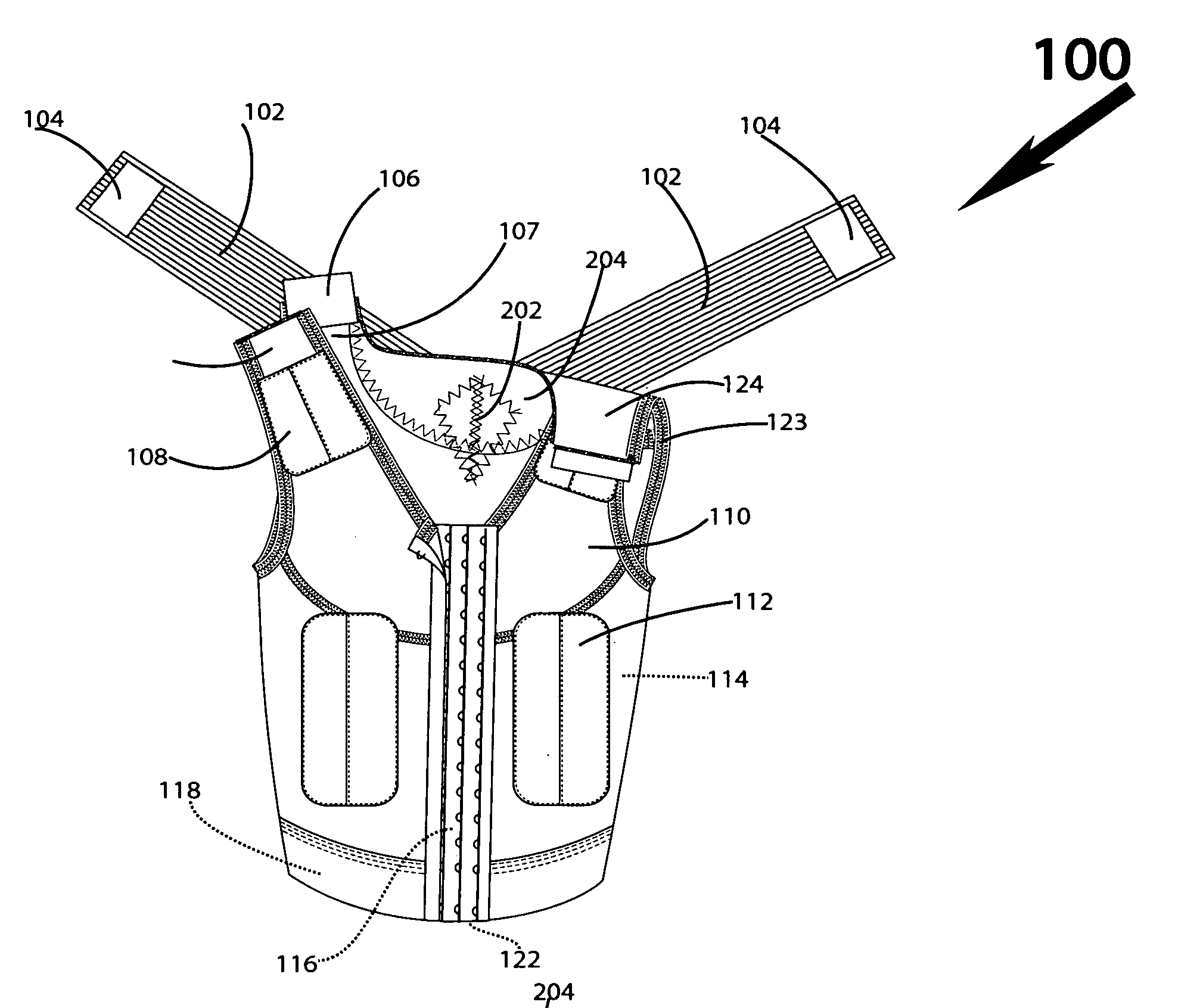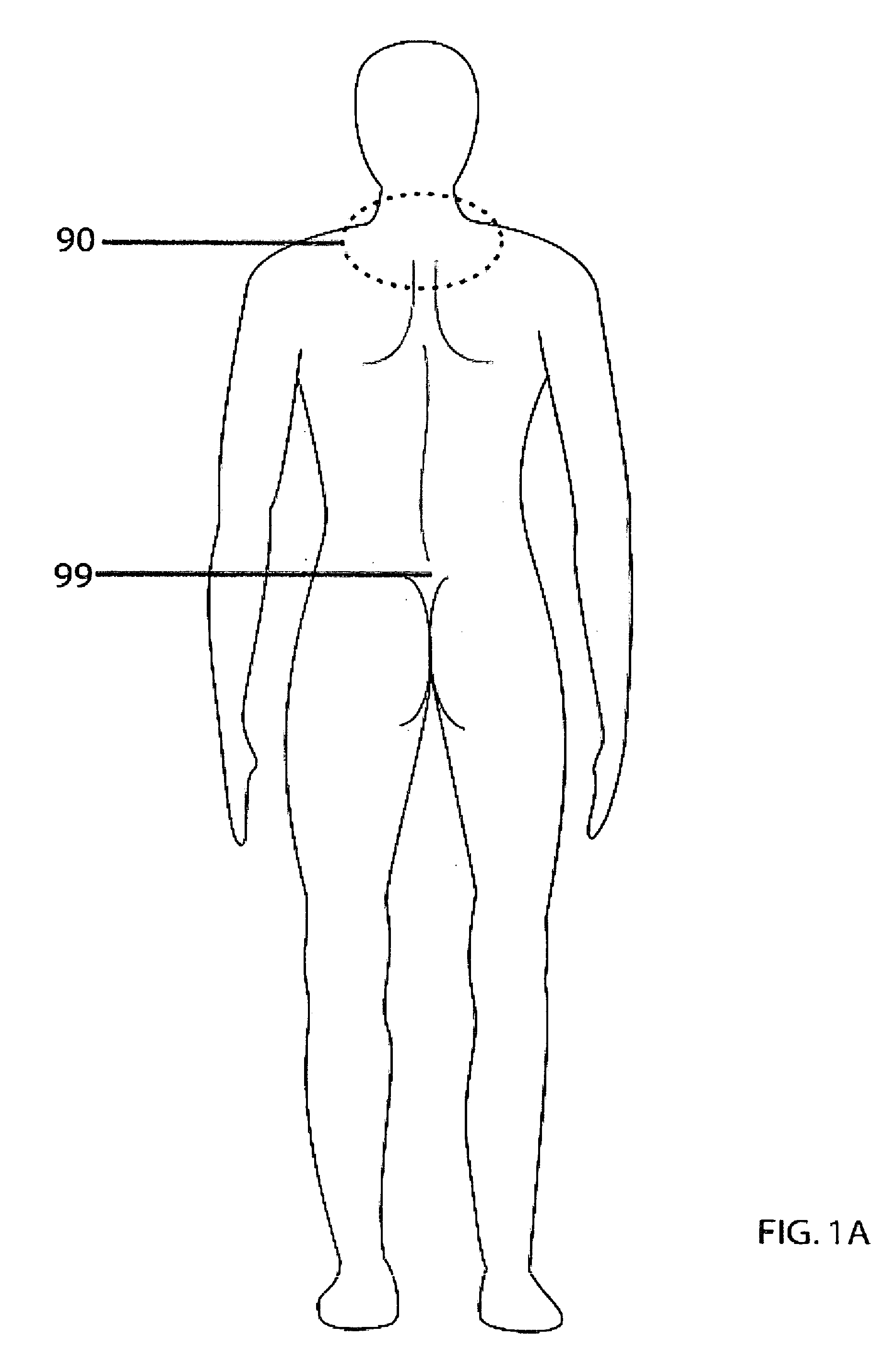Compression garment for dorsocervical surgeries
a compression garment and dorsocervical technology, applied in the field of compression garments for postsurgical rehabilitation, can solve the problems of ineffective compression to prevent swelling and stretching, swelling can also break or dislocate wound healing tapes, sutures, staples or other devices,
- Summary
- Abstract
- Description
- Claims
- Application Information
AI Technical Summary
Benefits of technology
Problems solved by technology
Method used
Image
Examples
Embodiment Construction
[0034]As shown in FIG. 1 the dorsocervical region 90 of a patient 99 is the area of the upper back immediately below the neck, between and above the patient's shoulder blades. Generally, the dorsocervical region is about 7.5 inches wide, and about 8 inches long. Typically, a “Buffalo” or “Dowagers” hump of fatty tissue can rise to about 2 inches in height or elevation in the dorsocervical region. It will be understood that the location, dimensions and physiognomy of patients varies. Therefore, the foregoing dimensions and locations are provided as examples only, and should in no way be deemed to limit the scope of the present invention as described.
[0035]Looking at FIGS. 2A, 2B, 3A and 3B the invented compression garment 100 is generally designed as a vest to snugly fit around about the torso and shoulder region of a patient 99. A uni-directional elastic waist band 118 encircles the patient's waist to anchor the garment 100, preventing it from riding up the patient's lower trunk. Li...
PUM
 Login to View More
Login to View More Abstract
Description
Claims
Application Information
 Login to View More
Login to View More - R&D
- Intellectual Property
- Life Sciences
- Materials
- Tech Scout
- Unparalleled Data Quality
- Higher Quality Content
- 60% Fewer Hallucinations
Browse by: Latest US Patents, China's latest patents, Technical Efficacy Thesaurus, Application Domain, Technology Topic, Popular Technical Reports.
© 2025 PatSnap. All rights reserved.Legal|Privacy policy|Modern Slavery Act Transparency Statement|Sitemap|About US| Contact US: help@patsnap.com



